How to properly grow asparagus outdoors
Often, the owners of summer cottages pay very little attention to the cultivation of asparagus. In some flower beds, a green herringbone decorates a flower bed, does not require special care, its branches are added to bouquets - that's all the use of a useful plant. And if you plant the bushes correctly and organize good care for them, you can pamper yourself with a vegetable delicacy, which in many countries can only be afforded by people with high incomes. Your main task is to choose the right place for asparagus at your dacha - asparagus is called in another way - and it will give a tasty harvest for more than a dozen years.
Preparation of planting material
The easiest way to get planting material is to buy a root in a specialized center. There they will explain to you the features of each variety, tell you what kind of soil and care it needs.
Asparagus of the following varieties is popular among gardeners:
- Early Yellow - prized for its yield and disease resistance;
- "Arzhentelskaya" - has excellent taste;
- "Tsarskaya" - received recognition from gardeners for its resistance to frost and drought;
- "Gainlim" - gives a lot of shoots.
You can get material yourself from an adult bush. The first way: divide the rhizome into parts, take several fragments for growing and plant them in the country. The second option: cut the cuttings from the one-year-old shoots, dip the lower parts into the growth stimulator and stick them in the sand. Seedlings need to create suitable rooting conditions and provide proper care at home. Cover them with the necks of plastic bottles, on hot days, remove the caps and moisten the soil in time. When the plants are well established, transplant them to a permanent location.
Growing from seeds is a very laborious task; you cannot plant them immediately on the garden bed. The grains should be soaked in water and kept in a warm place at + 30 for 2 days. When the seeds swell, you need to grow strong seedlings and only then plant them in open ground. Most often, the grains are planted in the greenhouse, for this you need to carefully prepare the place. Make furrows, put black soil at the bottom, to which superphosphate and ash are added. The top layer is garden soil with fallen leaves and manure. The planting depth should be about 2-4 cm, the distance between plants should be at least 3 cm.
Growing asparagus at home
Those who do not have a summer residence sometimes wonder if it is possible to grow edible shoots from seeds on a balcony or on a windowsill. At home, you can only grow seedlings or indoor asparagus flower. To get the first harvest, the plant must be 3 years old. During this time, a very long root will develop. Of course, you can put a large tub in the room and plant 1 bush, but the harvest will be so insignificant that there is no point in doing such work.
Advice
If you are looking to buy a delicacy from the store, remember that asparagus and soybeans have nothing to do with asparagus. The first of them is also a very tasty and healthy plant of the legume family. The second name is a semi-finished product made from soybeans.
If you want to grow seedlings from seeds, plant the seeds in separate deep cups. Fill them with a mixture of equal parts garden soil, peat, sand and rotted manure. Seedlings require careful care. The plant does not tolerate dryness, moisten the soil daily.2 weeks after germination, feed with complex fertilizer.
When the seedlings grow to 15 cm, start hardening the seedlings. Take it out to fresh air or ventilate the greenhouse first for 1-2 hours in the warmest time. Gradually increase your time outdoors. When the seedlings can stand in the air constantly without any changes for the worse, you can plant them in open ground in the country.
Site preparation
It is not for nothing that asparagus is very expensive. It takes a lot of space, it takes a lot of time from sowing seeds to harvest, and the number of shoots is small. For those who are trying to collect a large amount of vegetables from a small garden, it is better to abandon this culture. And yet, find a small area in the garden where you can plant at least 3-4 bushes, and grow several seedlings at home. When you taste the juicy shoots in 3 years, your attitude towards asparagus will change.
In the country, you need to start preparing asparagus soil in the fall. Note that each bush will need 0.25 m2 empty square. The site must be sunny, sheltered from the wind. The plant does not tolerate stagnant moisture; with a high occurrence of groundwater, good drainage or bulk beds are definitely needed. Most of all, asparagus likes fertile sandy loam. When digging in autumn, add 1 m2:
- Compost - 20 kg;
- Superphosphate - 70 g;
- Potassium sulfate - 40 g.
If you have dug the garden well in the fall, you can only loosen it in the spring. When harrowing, 60 g of ash and 20 g of ammonium nitrate are introduced per 1 m2... The holes should be spacious, 35 cm in diameter and depth. In June, you can plant home-grown bushes in a permanent place. In the hole, make a mound of fertile soil, shorten the root of the seedling to 4 cm and set the plant on a mound. Bury a hole, compact and water the soil well. In the future, young bushes will need proper care, then they will grow thick and strong.
After planting, mulch the bed with sawdust or leaf compost. This procedure will keep the soil loose, prevent weeds from breaking through, and keep the roots from freezing during the winter months. In the early years, while the bushes are still small, use the space between them for cultivation of herbs and herbs.
Proper care - a good harvest
Asparagus is a fairly large bush that has been growing in one place for many years. For proper development, it needs a lot of nutrients, and the soil is depleted over time. If you want to get good yields up to 25 years old, fertilize the site with manure every fall, and apply compost in the spring. In order for the shoots to grow faster and the harvest becomes richer, do not spare organic matter, water the beds with slurry every 3 weeks.
Do not allow the soil to dry out; on dry days, water the garden bed every day, especially during the growing season of edible shoots. If the sprouts don't get enough moisture, they will become bitter and tough. Excessive humidity or stagnant air is also dangerous: plants can be infected with a fungal infection. After each watering, it is necessary to loosen the top layer well. If you want to make it easier to care for the plants, mulch the bed with peat or compost when planting. With a layer thickness over 5 cm, not a single weed will appear on the garden bed.
You can see that if you plant asparagus in an open area with strong winds, it grows poorly, often gets sick. This does not happen from the cold, but from the fact that the roots of the plant are sensitive to any movement of the aboveground part. A strong flow of air shakes the stems, while small underground root processes break off, and the entire system begins to rot. To prevent this from happening in your garden, be sure to install a strong stake and tie shoots to it. To prevent scattered seeds from germinating and not making it difficult to care for the garden, remove the fruits that have appeared on the branches.
Advice
If you want to harvest asparagus grains, do not cut the shoots, let the bush develop.Please note that both male and female specimens must grow on the site to obtain viable seeds.
Asparagus rhizome grows upward every year and gradually emerges from the soil. Inspect the plantings several times per season and huddle them. This will enable the normal development of the underground part of the plant. At the end of summer, cut off the yellowed shoots, and before the onset of cold weather, cut off all the stems and cover the ground with peat or sawdust at least 5 cm thick.Rhizomes of adult plants will not die even in severe frosts, and spring frosts are dangerous for young shoots.
Diseases and pests of green bushes
Asparagus rarely gets sick, but sometimes fungal infections can strike it. Basically, such problems arise if the care of the plant is done incorrectly. The cause of diseases is excessive moisture in the soil or air. Bushes do not like strong winds, but they need fresh air. Do not arrange a bed in a completely enclosed space, allow a light breeze to penetrate there. For prevention, you can spray the plantings with fungicides in the spring and autumn.
Among insects, asparagus has 2 enemies.
- Asparagus fly. Brown midge with yellow legs and head. Its appearance can be determined by twisted and withering shoots.
- Asparagus leaf beetle. A beetle with blue wings and a red stripe. Eats up all parts of the plant. It is especially active in the second half of summer.
Spray plants with insecticides to combat parasites. When watering, pay attention to emerging pest eggs. Cut off damaged branches and burn them. To prevent insects from settling on plants, remove dry and damaged shoots in time, fight weeds. Proper care will save you the trouble of growing asparagus.
How to properly harvest and preserve the crop
The gardener can't wait to taste the young sprouts. Take your time: until the plant is 3 years old, you cannot cut off the shoots. Wait until the bush accumulates enough strength, then in the next years it will give you good harvests. The first time, cut no more than 5 stems, leave the rest for the development of a strong bush. From good adult specimens, the gardener can collect up to 30 sprouts per season. Never remove all shoots: if not a single branch remains, the bush may die.
Shoots that have reached 20 cm in height, on which leaf buds have not yet bloomed, are suitable for food. As soon as the first needles begin to form, the stems will become tough and unsuitable for food. Break open the soil and break off with your hands or cut off the shoots with a knife near the rhizome, just proceed carefully so as not to disturb or injure the root system. Harvesting is possible all summer, but the richest spring months.
There are 3 product categories.
- White asparagus is the most valuable species. These shoots were dug out of the ground, were not exposed to sunlight and retained the maximum concentration of nutrients.
- Purple asparagus was not exposed to light for long and did not have time to develop chlorophyll. It tastes slightly bitter.
- Green asparagus grew in the sun, accumulated a lot of chlorophyll and carbohydrates, but lost some of the vitamins. Bitter taste.
Everyone's preferences are different, some gourmets consider white asparagus the most delicious and tender, others claim that green shoots have a richer and richer taste. If you want to taste the white sprouts, protect them from light. In the fall, after cutting the stems, make an earthen mound about 20 cm high above the roots. In the spring, watch the soil surface. When you notice bumps or small cracks, gently break up the soil to the root. Cut off the shoots that have reached the desired height and rebuild the embankment. After a few days, the next shoots will begin to break through to the surface, excavate the ground again and harvest.
Advice
If in the fall you did not make mounds, in the spring you can cover the ground with boxes or make a shelter from a material that does not transmit light: black film, roofing material.
Fresh shoots should be eaten immediately or used for cooking, preparations for the winter. If you need to use the asparagus later, place it in a jar of water like a bouquet and put it in the refrigerator. Remember that if there are products with a strong smell on the shelves, the shoots will absorb the foreign aromas. Sprouts can be frozen, but at the same time they will lose some of their taste and useful qualities.
Output
Don't believe the rumor that asparagus is a very capricious plant, that growing asparagus from seed outdoors and caring for it takes too long. The most difficult thing happens in the first year, when growing seedlings at home or in a greenhouse, and when the bushes take root and begin to develop well, they do not require much attention from you. You need to cultivate the soil well once and plant the asparagus correctly in the country, and then it will grow in one place for many years.
In order for the shoots to turn out to be white and delicate in taste, they must be protected from light. The most convenient way is to pour a mound of earth over the plant in the fall, after cutting the stems, and dig out the soil during harvesting. When cutting, do not be greedy, do not completely remove all the stems, leave something for the development of the bush. The faster you put the product into processing, the tastier and healthier the dish will turn out. Use asparagus for salads, soups, vegetable side dishes, and feel like a millionaire who has access to expensive delicacies.
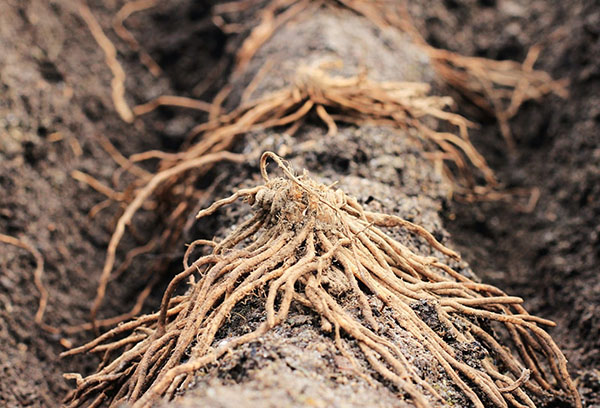
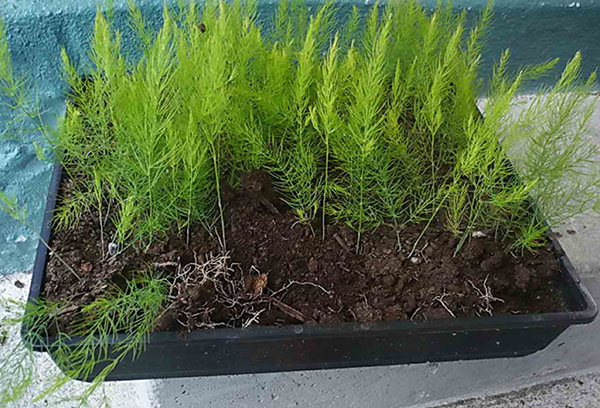
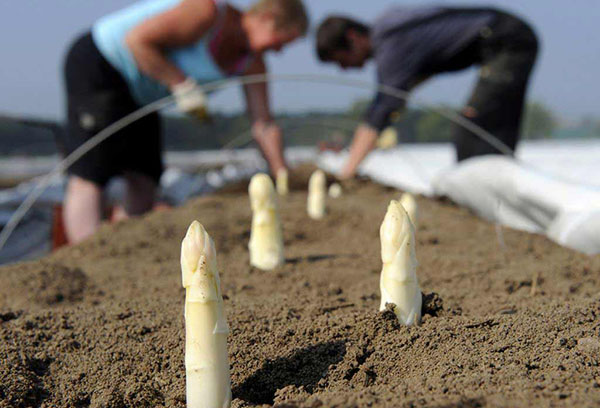
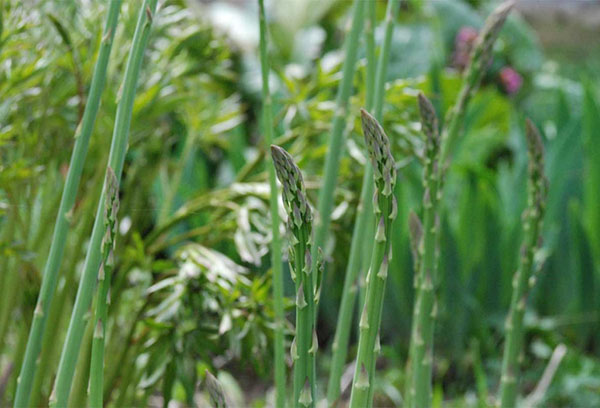
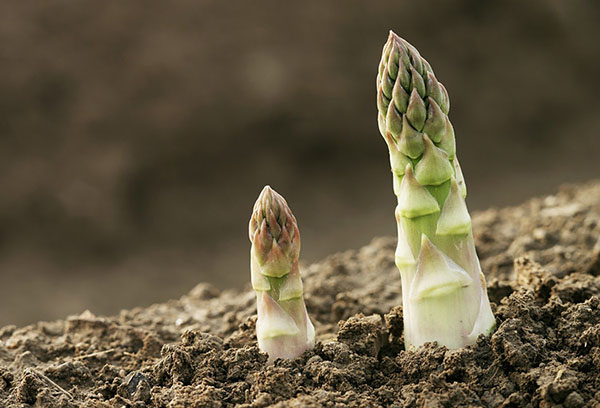
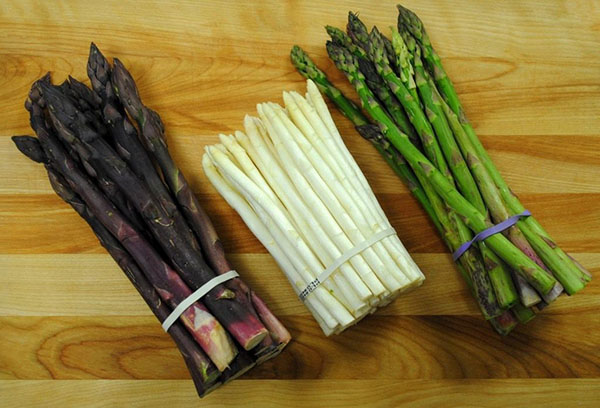
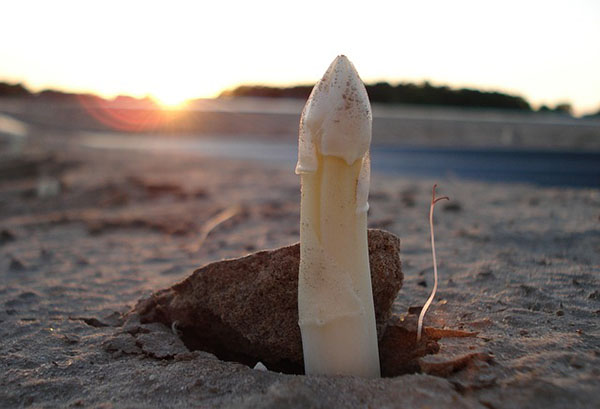
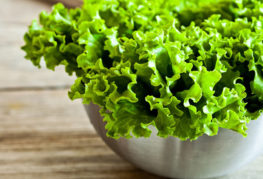
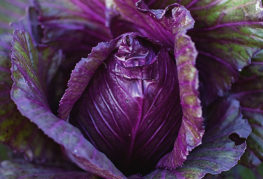
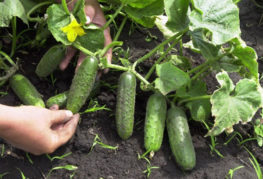
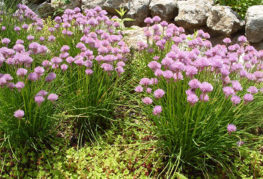
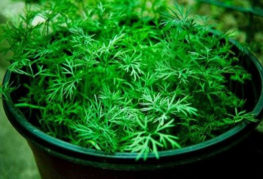
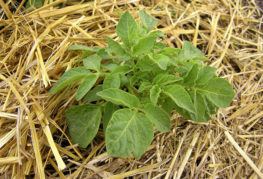
and will be published shortly.